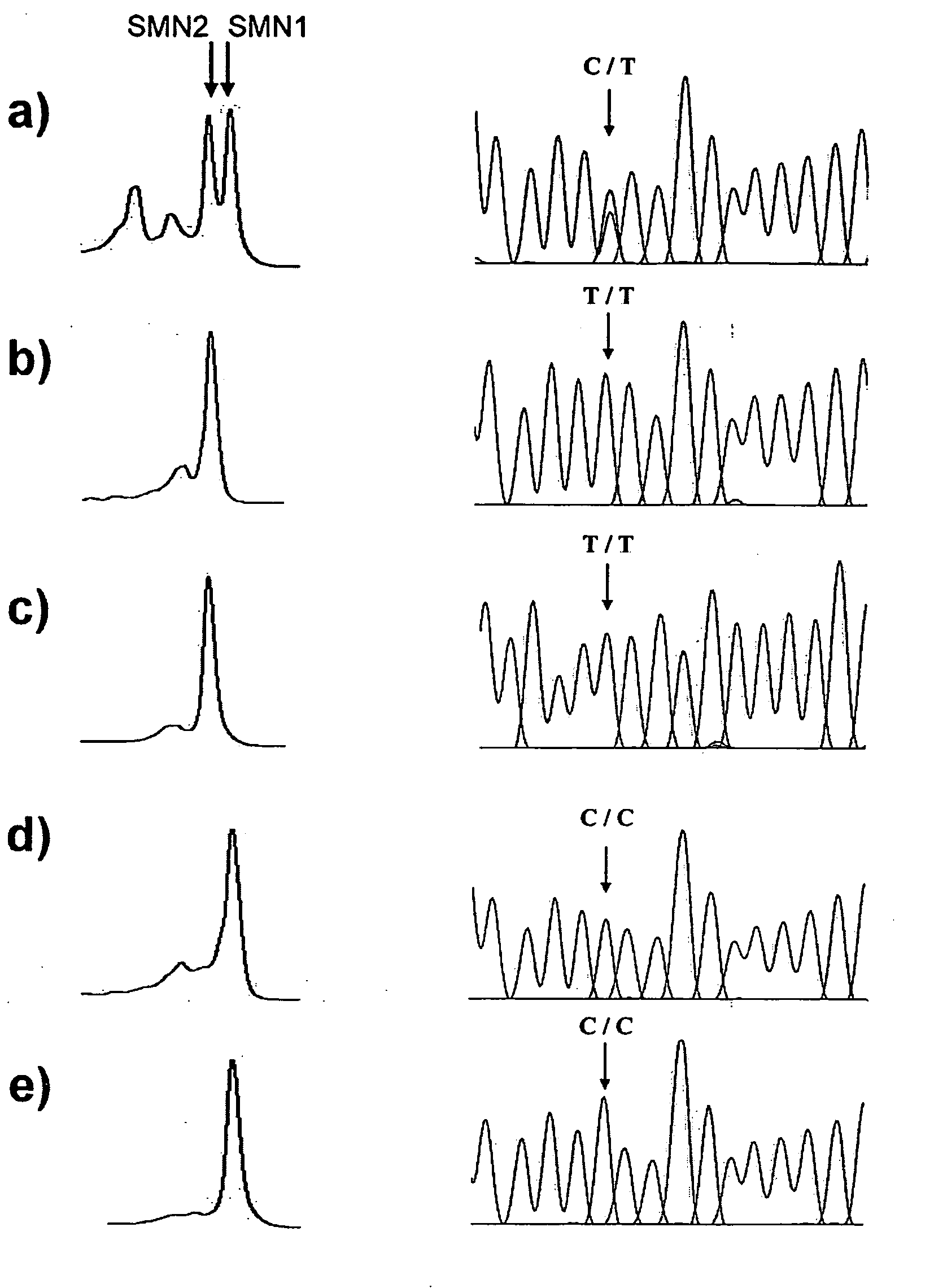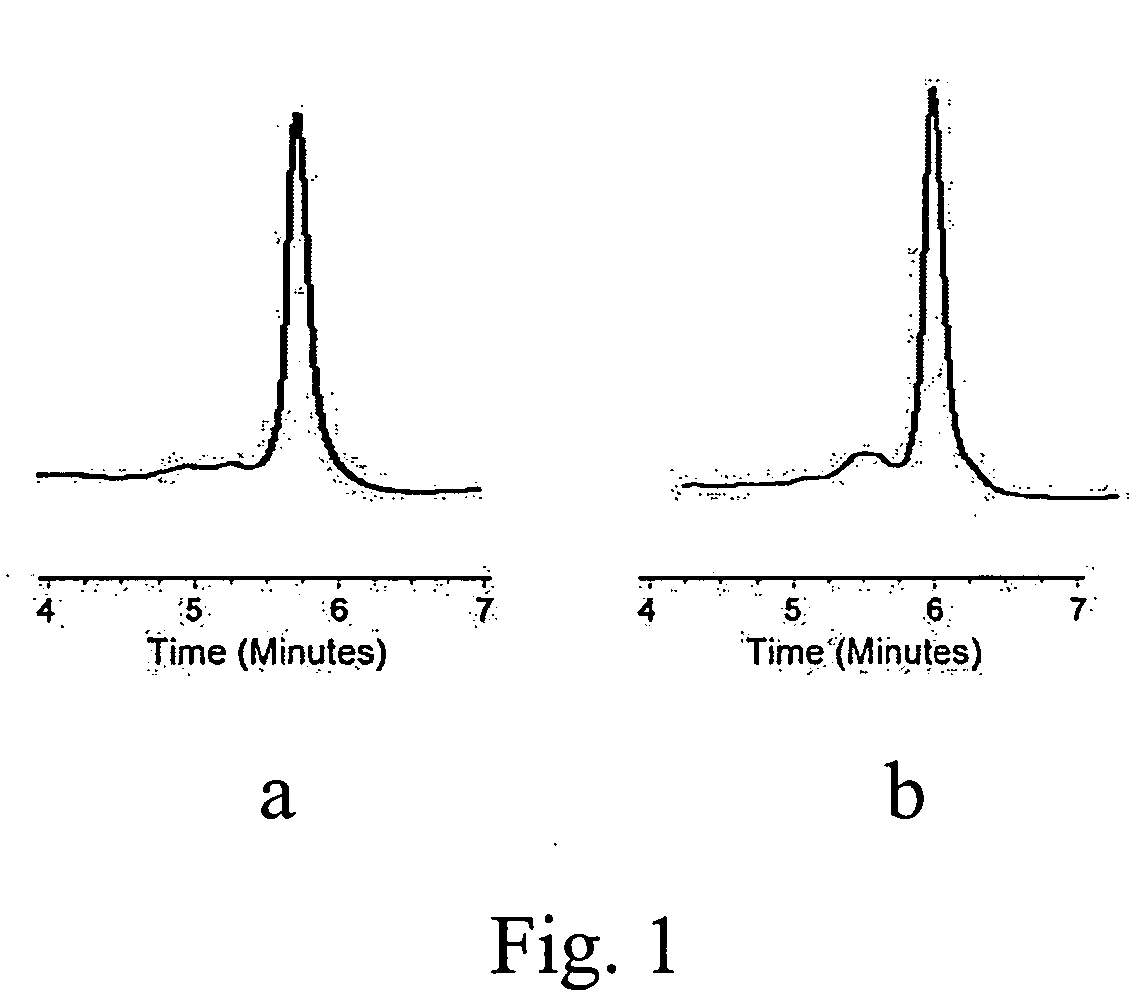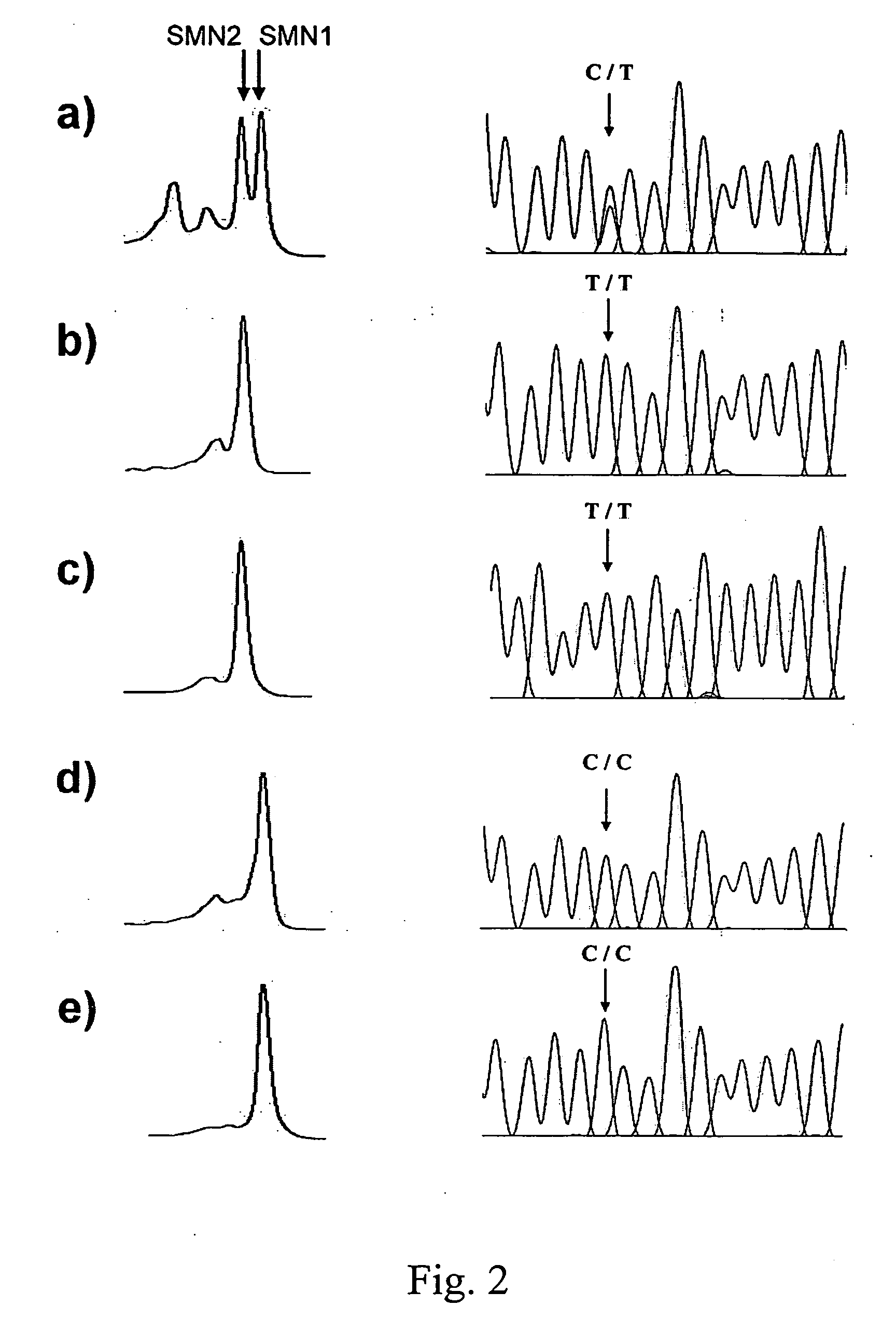Methods for SMN genes and spinal muscular atrophy carriers screening
a spinal muscular atrophy and gene technology, applied in the field of gene detection methods, can solve the problems of high cost of detecting equipment and materials, inability to quantitatively detect, and death of dysphagia and respiratory failur
- Summary
- Abstract
- Description
- Claims
- Application Information
AI Technical Summary
Benefits of technology
Problems solved by technology
Method used
Image
Examples
example 1
[0021] Genomic DNA was collected from peripheral whole blood with a Puregene DNA Isolation Kit (Gentra Systems, Inc., Minneapolis, Minn., USA), according to the manufacturer's instructions.
example 2
[0022] Polymerase chain reaction is performed to amplify SMN gene fragments in the genomic DNA to provide the sufficient DNA quantity for further detection.
[0023] Two almost identical copies of the SMN gene, telomeric SMN (SMN1) and centromeric SMN (SMN2), have been identified. These two SMN genes are highly homologous and differ in only five nucleotide exchanges within their 3′ regions. These variations do not alter the encoded amino acids. These nucleotide differences, located in exons 7 and 8, allow the SMN1 gene to be distinguished from the SMN2 gene. It has been reported that more than 95% of SMA patients were homozygous for deletion of the SMN1 gene. Moreover, small deletions or point mutations have been found in patients in whom SMN1 was present.
[0024] The SMN2 gene cannot compensate for the SMN1 deletion because, transiently, a single-nucleotide difference in exon 7 causes exon skipping. Therefore, detection of the absence of SMN1 can be a useful ...
example 3
DHPLC Analysis
[0026] The DHPLC system used in this study is a Transgenomic Wave Nucleic Acid Fragment Analysis System (Transgenomic Inc., San Jose, Calif.). DHPLC was carried out on automated HPLC instrument equipped with a DNASep column (Transgenomic Inc., San Jose, Calif.). The DNASep column contains proprietary 2-mm nonporous alkylated poly (styrenedivinylbenzene) particles. The DNA molecules eluted from the column are detected by scanning with a UV detector at 260 nm. DHPLC-grade acetonitrile (9017-03, J. T. Baker, Phillipsburg, N.J., USA) and triethylammonium acetate (TEAA, Transgenomic™, Crewe, UK) constituted the mobile phase. The mobile phases consisted of 0.1 M TEAA with 500 μL of acetonitrile (eluent A) and 25% acetonitrile in 0.1 M TEAA (eluent B).
[0027] For heteroduplex and multiplex detection, crude PCR products obtained from example 2 were subjected to an additional 5-min 95° C. denaturing step followed by gradual reannealing from 95° C. to 25° C. over a period of 70...
PUM
| Property | Measurement | Unit |
|---|---|---|
| volume | aaaaa | aaaaa |
| volume | aaaaa | aaaaa |
| flow rate | aaaaa | aaaaa |
Abstract
Description
Claims
Application Information
 Login to View More
Login to View More - R&D
- Intellectual Property
- Life Sciences
- Materials
- Tech Scout
- Unparalleled Data Quality
- Higher Quality Content
- 60% Fewer Hallucinations
Browse by: Latest US Patents, China's latest patents, Technical Efficacy Thesaurus, Application Domain, Technology Topic, Popular Technical Reports.
© 2025 PatSnap. All rights reserved.Legal|Privacy policy|Modern Slavery Act Transparency Statement|Sitemap|About US| Contact US: help@patsnap.com



